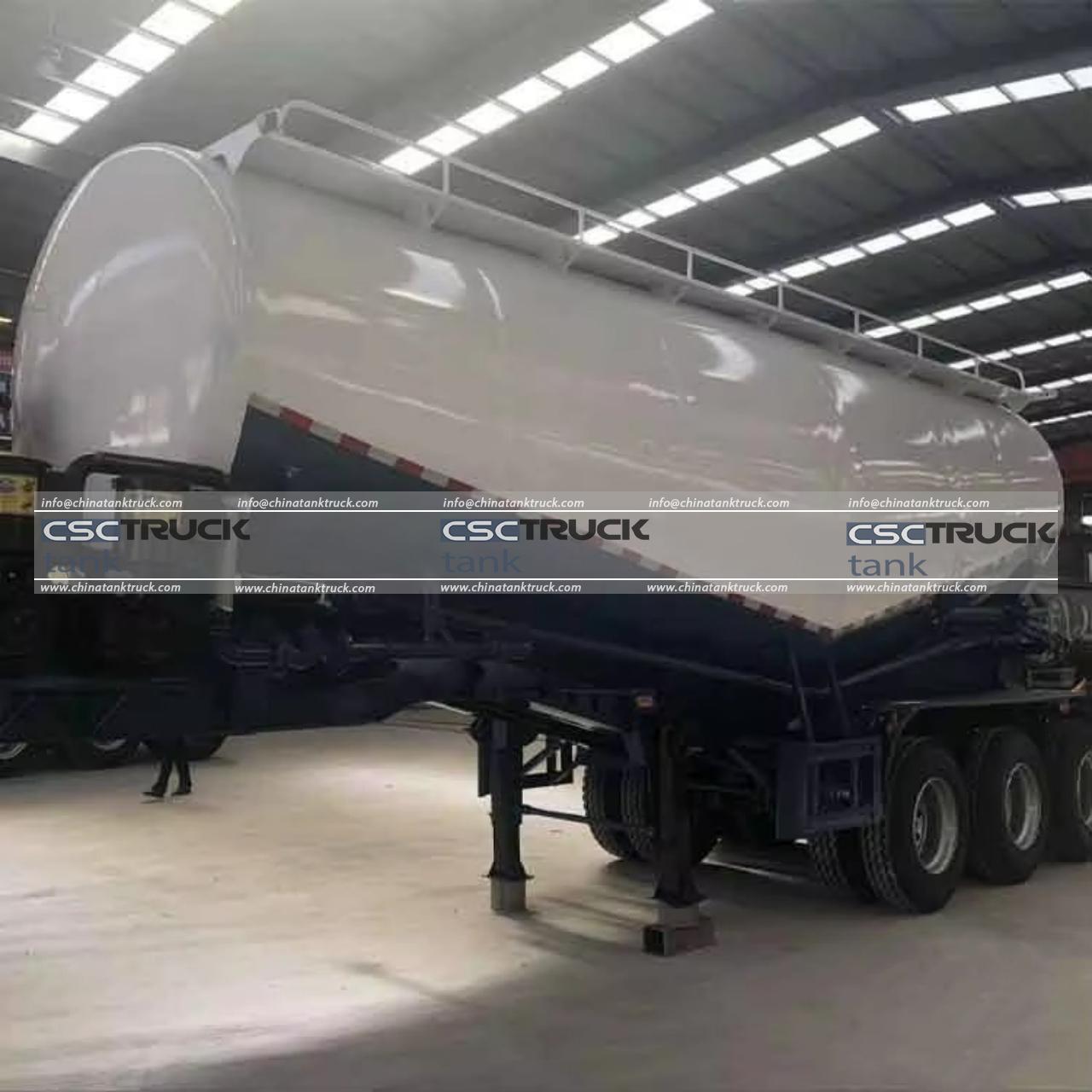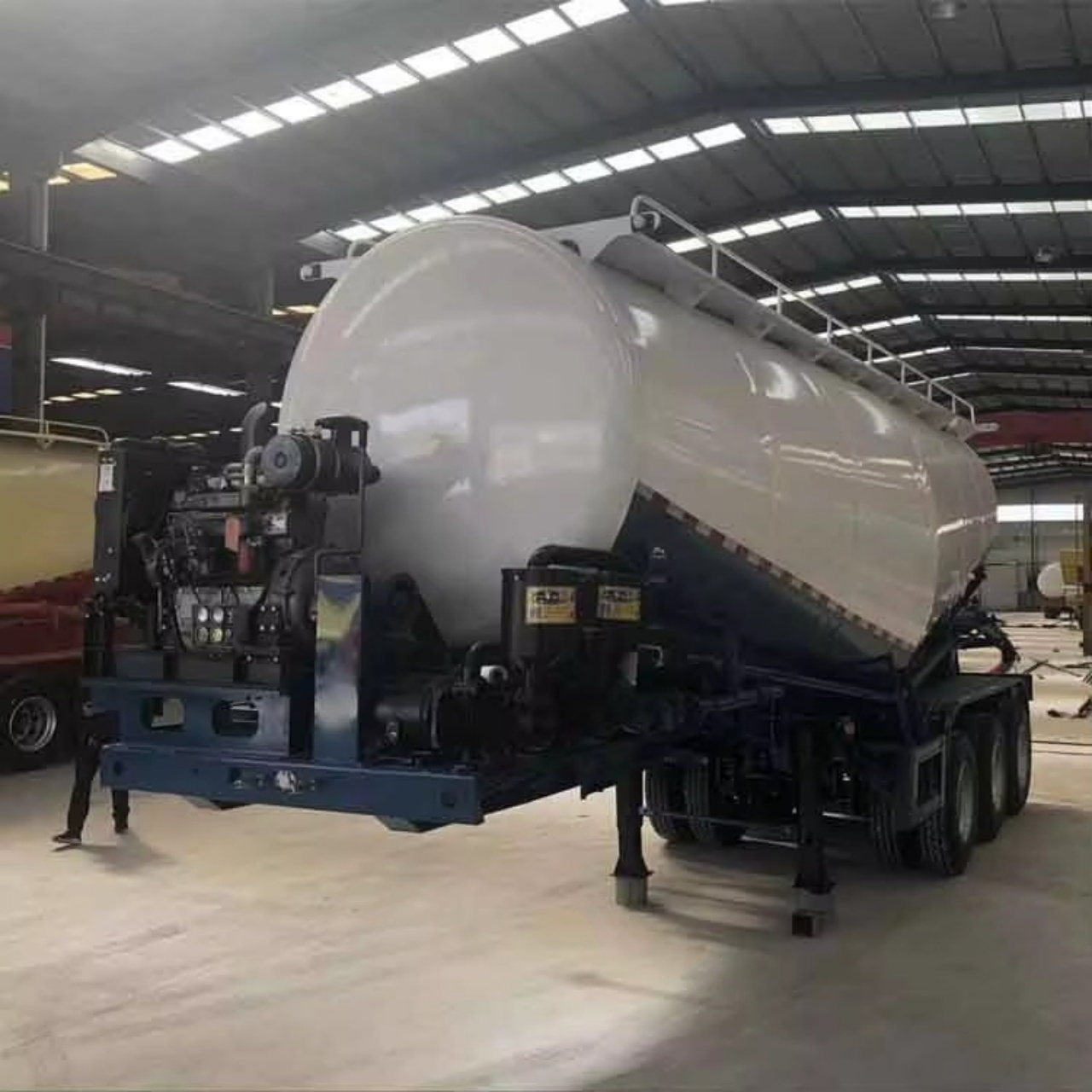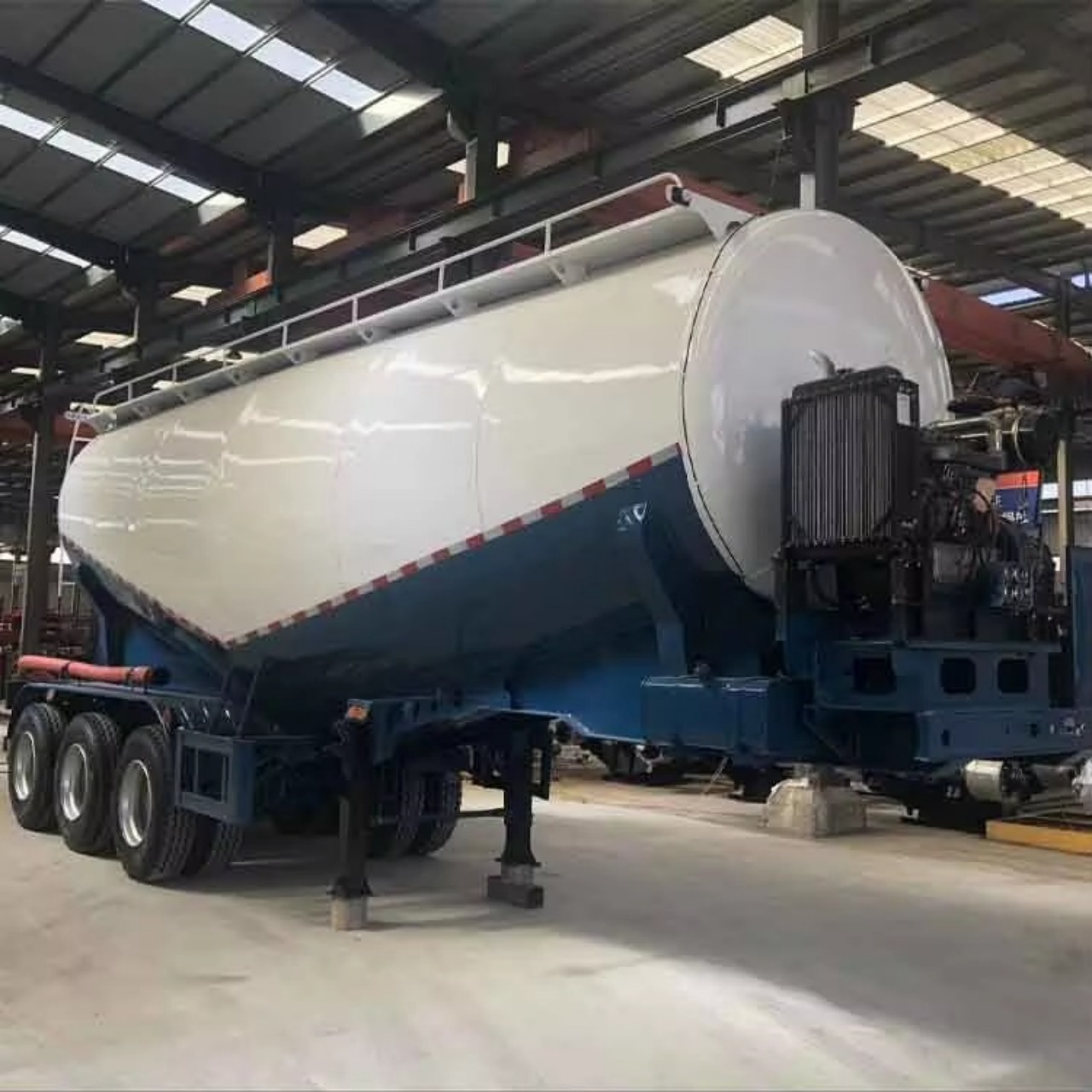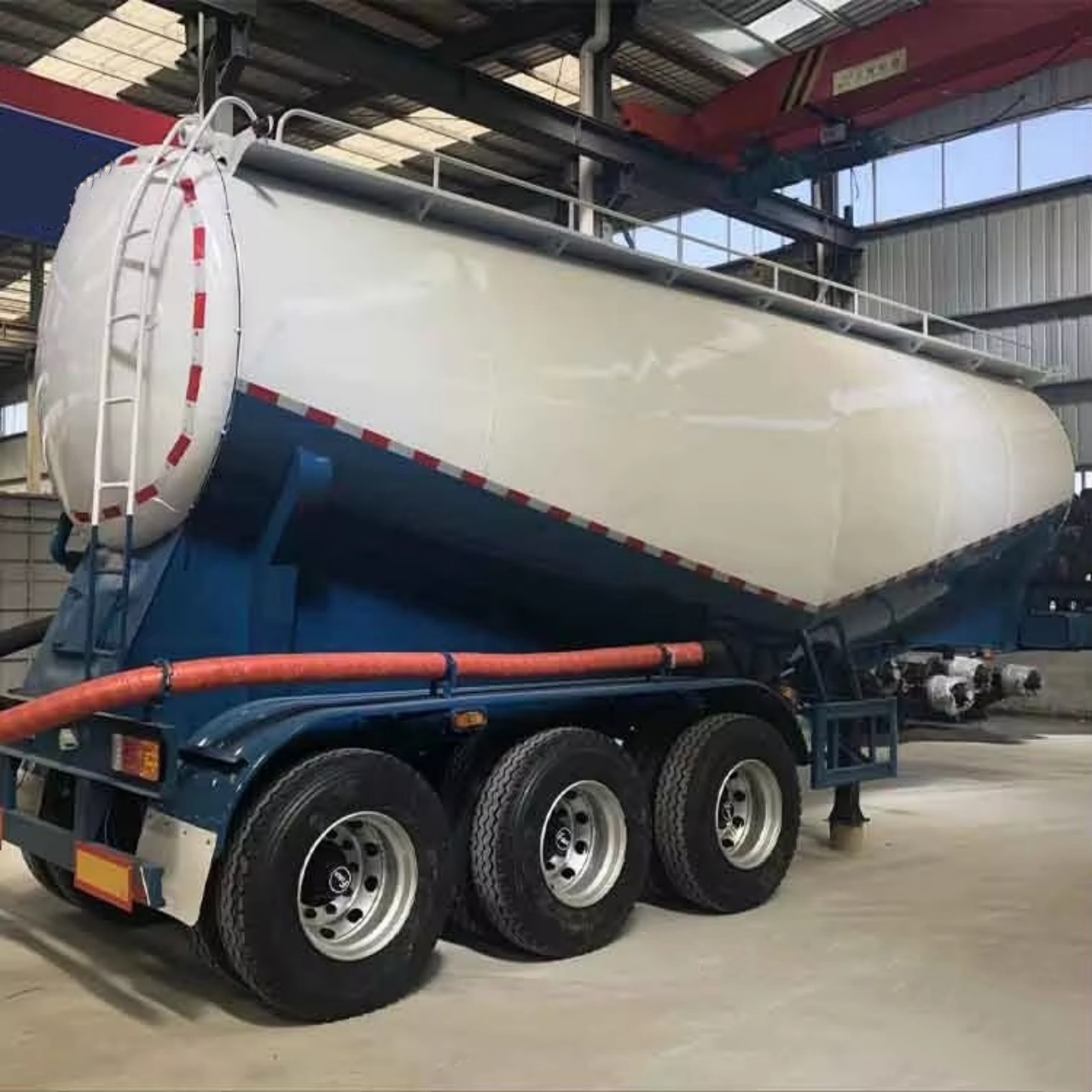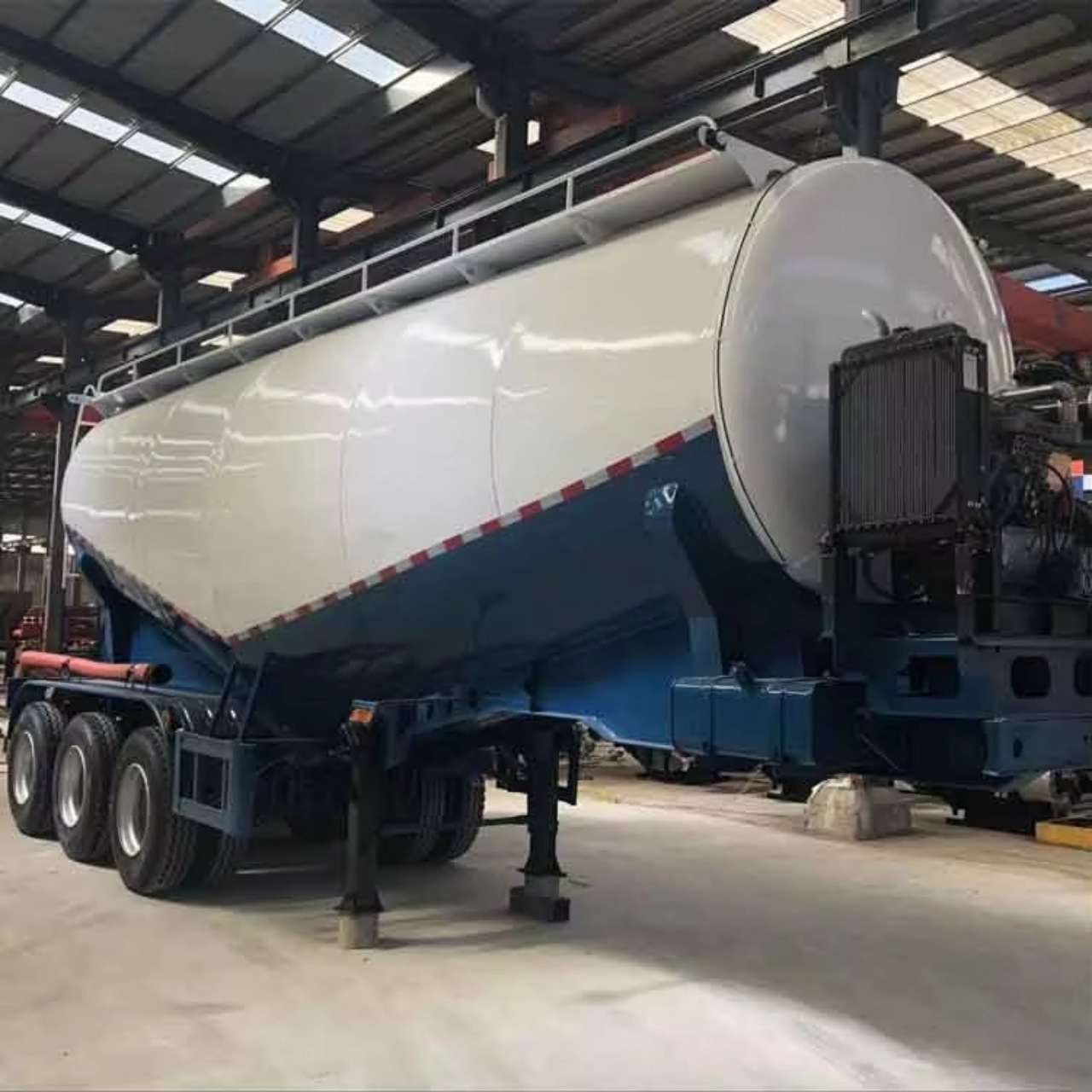In the world of logistics and bulk material transport, various trailer types are designed for specific tasks. Among these, pneumatic tanker trailers play a vital role in hauling dry bulk materials. Often seen delivering powdered cement, flour, plastic pellets, or lime, these specialized trailers are indispensable to industries such as construction, agriculture, and manufacturing. But what exactly is a pneumatic tanker trailer, how does it work, and what are its main benefits? This article explores these questions in detail.
Understanding the Basics
A pneumatic tanker trailer, also known as a dry bulk tanker trailer, is a specialized type of semi-trailer designed for transporting dry, free-flowing bulk materials. Unlike liquid tankers, which are built to carry fluids, pneumatic tankers are engineered to haul powdered or granular substances. These trailers are most commonly made of aluminum or steel and feature a pressurized system that allows for the discharge of contents without tipping the trailer.
The term “pneumatic” refers to the use of compressed air to unload the materials. This method offers several advantages, including safer and cleaner operations, particularly in industries where contamination or moisture must be strictly avoided.
Key Components of a Pneumatic Tanker Trailer
Several key components distinguish pneumatic tanker trailers from other types of bulk transport trailers:
1. Tank Body
The main tank is usually cylindrical and compartmentalized depending on the model and intended use. It is built from lightweight but durable materials like aluminum alloy or carbon steel. The shape helps with pressure distribution and efficient unloading.
2. Manholes
Located on top of the tank, manholes are used for loading dry bulk materials. Each manhole typically has a secure cover to ensure the cargo is sealed from moisture or contaminants.
3. Air Compressor System
This is the heart of the pneumatic system. A compressor (mounted on the truck or available at the delivery site) injects compressed air into the tank. The air pressure fluidizes the dry material and forces it out through discharge valves.
4. Discharge Lines and Valves
At the bottom of the tank, discharge lines connect to valves and hoses. These lines allow the controlled flow of materials into a silo, storage bin, or processing equipment.
5. Fluidizing Pads or Beds
Located inside the tank near the bottom, fluidizing pads allow air to pass through the powder, reducing friction and causing the material to behave like a fluid. This makes it easier to discharge through piping.
6. Pressure Relief Valves and Gauges
To ensure safe operation, these trailers are equipped with safety valves and pressure gauges to monitor and control internal air pressure.
How Does a Pneumatic Tanker Trailer Work?
The operation of a pneumatic tanker trailer revolves around the principle of fluidization. Here’s a step-by-step overview:
- Loading: The trailer is filled with dry material through the manholes. Proper sealing is essential to prevent contamination or leakage.
- Sealing and Pressurizing: Once filled, the tank is sealed, and compressed air is introduced from an external air source. The pressure is applied at a controlled rate to avoid damaging the material or the trailer.
- Fluidization: The compressed air passes through fluidizing pads, agitating the material and causing it to behave like a liquid.
- Discharging: The pressurized and fluidized material is directed through the discharge pipes into the desired receiving container, often a silo. Gravity and air pressure work together to achieve complete unloading.
Common Applications
Pneumatic tanker trailers are used in a wide range of industries that require the transport of bulk dry goods. Some typical applications include:
- Cement and Lime: Essential in the construction industry, these materials are often transported in pneumatic tankers to construction sites or concrete mixing facilities.
- Plastic Pellets: Used in manufacturing processes, especially in the plastics industry.
- Flour and Grains: Food-grade pneumatic trailers are used for transporting flour, starch, and other dry food ingredients.
- Chemicals and Minerals: Dry chemicals and powdered minerals like soda ash or fly ash are commonly hauled this way.
- Animal Feed and Fertilizers: Agriculture depends on pneumatic trailers for bulk feed and powdered or granular fertilizer delivery.
Types of Pneumatic Tanker Trailers
There are several variations of pneumatic tanker trailers to suit different needs:
1. Standard Pneumatic Tankers
These are the most common type, used for general dry bulk material transport. They come in different capacities, usually ranging from 30 to 60 cubic meters.
2. Food-Grade Pneumatic Tankers
Designed for the sanitary transport of food ingredients like flour, sugar, or starch. They are built with stainless steel and comply with food safety regulations.
3. High-Pressure Tankers
Built for materials that require higher air pressure for discharge, often used in chemical or industrial applications.
Advantages of Pneumatic Tanker Trailers
1. No Need for Tilting or Lifting
Because unloading is done using air pressure, the trailer remains level throughout the process, making it safer and more stable, especially on uneven surfaces.
2. Clean and Contamination-Free
Since the tank is sealed and enclosed, there’s minimal risk of product contamination. This is crucial in food-grade and chemical industries.
3. Efficient and Fast Unloading
The use of compressed air reduces unloading time significantly compared to mechanical or gravity systems.
4. Versatility
Pneumatic tankers can be used for a wide range of materials across various industries, reducing the need for multiple types of trailers.
5. Reduced Residue
The fluidization process ensures a more thorough discharge of materials, minimizing product loss.
Challenges and Considerations
While pneumatic tankers offer many benefits, there are also some considerations:
- Higher Initial Cost: Compared to gravity-fed trailers, pneumatic tankers are more expensive due to the specialized design and components.
- Maintenance Needs: Compressors, valves, and fluidizing systems require regular maintenance to ensure performance and safety.
- Operator Skill: Safe and efficient operation requires trained personnel familiar with pressurized systems and proper handling of the materials.
Conclusion
Pneumatic tanker trailers are a cornerstone in the dry bulk transport sector. Their ability to efficiently move large volumes of powdered and granular materials in a clean, sealed, and controlled manner makes them indispensable for modern industry. Whether transporting cement for a construction site, flour to a bakery, or plastic pellets to a manufacturing plant, pneumatic tankers ensure that the job gets done safely and efficiently. As technology and design evolve, these trailers continue to offer even greater versatility and reliability for bulk material logistics.
